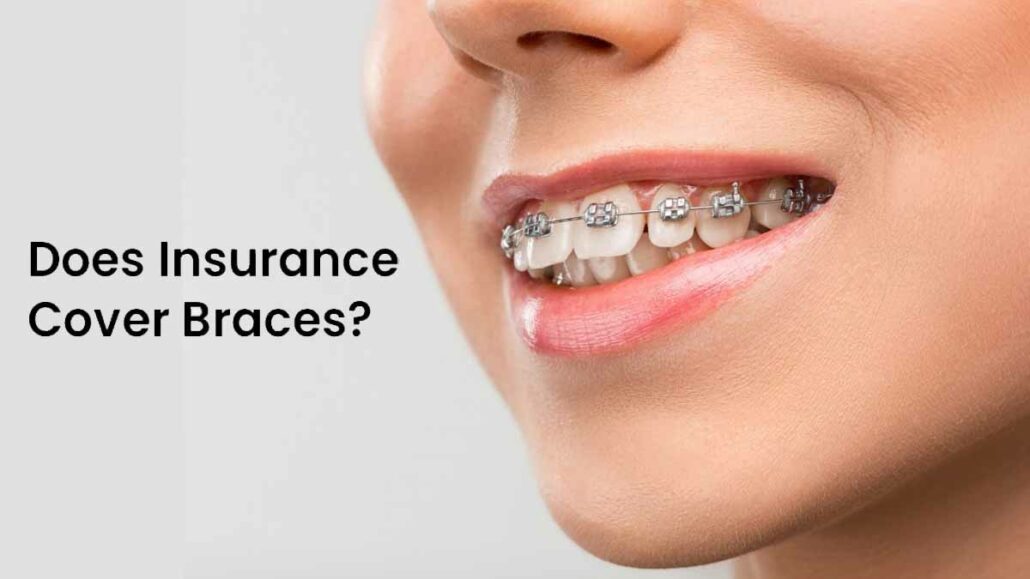Can Insurance Cover Braces? Ever wondered if that dazzling smile you crave can be achieved with a little help from your insurance plan? Braces can straighten teeth and improve your bite, but the cost can be a real barrier. The good news is that dental insurance might be able to shoulder some of that financial burden. However, coverage for braces isn’t always straightforward. In this article, we’ll delve into the world of insurance and braces, exploring what types of plans typically cover orthodontic treatment, the factors that influence coverage, and what you can do to maximize your insurance benefit.

First things first, let’s clear up a common misconception. Traditional medical insurance typically doesn’t cover orthodontic treatment like braces. Medical insurance focuses on treating illnesses and injuries, while dental insurance specifically addresses dental needs, including orthodontic care.
Insurance companies often assess orthodontic treatment based on its purpose. If your braces are deemed medically necessary to correct jaw problems, misalignment causing bite issues or other functional concerns, there’s a higher chance of receiving coverage. Conversely, purely cosmetic procedures to improve the appearance of your smile might not be covered.
Does Dental Insurance Cover Braces?
The short answer is: maybe. Dental insurance typically covers orthodontic treatment, which includes braces, but with limitations. Here’s a breakdown:
- Coverage Type: Most dental plans focus on preventive and basic restorative care. Orthodontic treatment may be included, but often with restrictions.
- Age: Many plans limit orthodontic coverage to children under 19. Adult coverage for braces is becoming more common but check your specific plan details.
- Medical Necessity: Insurance is more likely to cover braces if they are deemed medically necessary to correct functional problems like severe crowding or jaw misalignment. Purely cosmetic cases may not be covered.
Factors Influence Coverage for Braces
Several factors influence whether your insurance covers braces and the extent of that coverage. Here are some key points:
- Plan Type: Different dental plan types (HMO, PPO, EPO) may have varying coverage levels for orthodontics.
- Yearly/Lifetime Maximums: There may be a limit on the total amount your insurance will pay for orthodontic treatment in a year or over your lifetime.
- Pre-existing Conditions: Some plans may exclude coverage for orthodontic issues that existed before you enrolled.
- In-Network Providers: Using an orthodontist within your insurance network might be required for coverage.
Types of Braces and Coverage Variations
While most insurance plans cover traditional metal braces, there might be slight variations in coverage for other options:
- Ceramic Braces: These are similar to metal braces but tooth-colored, offering a more discreet look. Coverage might be similar to metal braces, but check with your provider.
- Lingual Braces: Attached behind the teeth, these are virtually invisible. However, they may be more expensive and have limited insurance coverage.
- Invisalign: This clear aligner system is a popular alternative to traditional braces. Coverage for Invisalign may vary depending on your plan.
Maximizing Your Insurance Benefit for Braces
If you’re considering braces, here are some steps to maximize your insurance benefit:
- Review Your Plan: Carefully read your dental insurance policy to understand your orthodontic coverage details.
- Contact Your Insurance Provider: Call your insurance company directly to clarify any questions you have about coverage for braces.
- Get Pre-Authorization: If your plan requires pre-authorization, obtain it before starting treatment.
- Choose an In-Network Orthodontist: In-network providers typically offer contracted rates with your insurer, reducing out-of-pocket costs.
Finding the Best Dental Insurance for Braces
Choosing the right dental insurance plan for braces requires careful consideration of several factors:
- Coverage Details: Compare the percentage covered, yearly maximums, and exclusions for orthodontic treatment among different plans.
- Orthodontist Network: Ensure your preferred orthodontist is in-network with the chosen plan to maximize coverage.
- Overall Cost: Consider the plan’s monthly premium alongside the estimated out-of-pocket costs for braces treatment.
FAQs about Braces and Insurance
Does medical insurance cover braces?
Medical insurance typically doesn’t cover orthodontic treatment unless it’s medically necessary for a jaw issue.
Does insurance cover clear braces (Invisalign)?
Coverage for Invisalign follows the same principles as traditional braces. Check your plan details.
How much do braces typically cost without insurance?
Braces can range from $3,000 to $10,000 or more without insurance.
Can I use an FSA or HSA to pay for braces?
Yes, you can typically use funds from a Flexible Spending Account (FSA) or Health Savings Account (HSA) to cover out-of-pocket costs for braces that aren’t covered by insurance.
Conclusion
Dental insurance can play a significant role in making braces more affordable. By understanding your plan’s coverage and taking the necessary steps, you can maximize your insurance benefit and achieve a confident, healthy smile.

